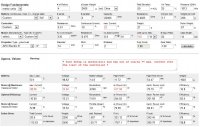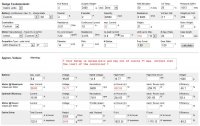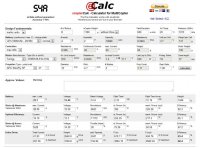Please, Ferdinand - you're sounding defensive (I could be wrong, hard to tell sometimes with written exchanges). I'm not attacking or suggesting you are wrong about anything. I'm genuinely interested that your results seem to contradict the "conventional wisdom", which itself is based on the general science of propeller theory. What I find most interesting is that not only does your combo fly well, it also seems to be very efficient (assuming that's the combo used for your duration and distance attempts).
I'd really, really appreciate it if you could supply the figures necessary to generate an eCalc model for your setup (or you may already have that). I've noticed, as have others, that it is very difficult to get eCalc models up to the kind of flight duration you have achieved. This may be because eCalc's mathematical model breaks down in certain ranges, or because we're not trying the right combinations (guided as we are by this "conventional wisdom"). Or it could be a combination of these two. Either way, I'd like to find out why your combo works so effectively. If it proves eCalc's maths to be wrong then the author may be persuaded to fix it. And understanding this properly will advance the field of small multirotors for all.
Qualifiers:
- As Denny points out, maximum lift efficiency often comes at the expense of stability, and vice-versa. This represents a further compromise that needs to be understood.
- I'm definitely prepared to believe that Graupner puts more "science" into their blade designs than many other model prop manufacturers - that they know some stuff that we don't
I'd really, really appreciate it if you could supply the figures necessary to generate an eCalc model for your setup (or you may already have that). I've noticed, as have others, that it is very difficult to get eCalc models up to the kind of flight duration you have achieved. This may be because eCalc's mathematical model breaks down in certain ranges, or because we're not trying the right combinations (guided as we are by this "conventional wisdom"). Or it could be a combination of these two. Either way, I'd like to find out why your combo works so effectively. If it proves eCalc's maths to be wrong then the author may be persuaded to fix it. And understanding this properly will advance the field of small multirotors for all.
Qualifiers:
- As Denny points out, maximum lift efficiency often comes at the expense of stability, and vice-versa. This represents a further compromise that needs to be understood.
- I'm definitely prepared to believe that Graupner puts more "science" into their blade designs than many other model prop manufacturers - that they know some stuff that we don't



